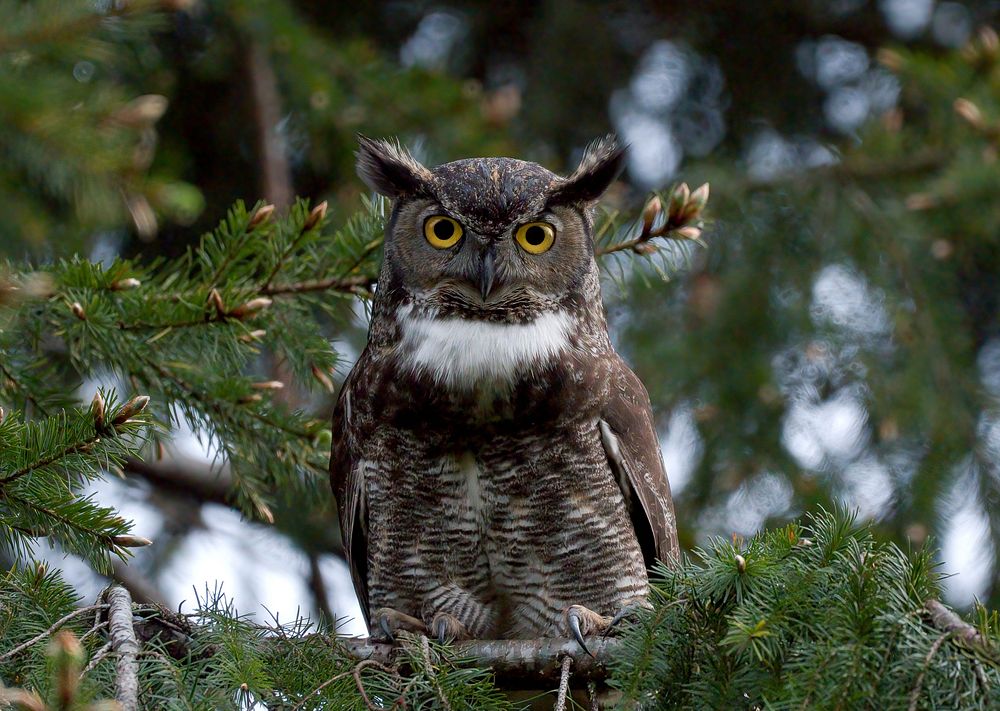https://creativecommons.org/publicdomain/zero/1.0/https://www.rawpixel.com/image/9653206

Great horned owl along lower Columbia River
A great horned owl, with its beautifully colored yellow and black eyes, perches in a budding evergreen tree at the Julia Butler Hansen Refuge for Columbian White-tailed Deer in southwest Washington, June 29, 2021. USFWS photo: Jake Bonello
The great horned owl is a ferocious predator and one of the most widespread owl species in the Americas.
Hunting mostly at night, the big owls swoop down from high perches to go after mammals like mice, voles, weasels and rabbits. They will also target larger prey, such as skunks and even other owls.
On the refuge, great horned owls are often heard calling in late winter as they prepare to nest. In addition to a hoot, the owls have numerous types of calls: bark; rattle; growl; shriek; and a whoop.
The 6,000-acre Julia Butler Hansen Refuge for Columbian White-tailed Deer was established in 1971 and occupies various types of habitat on both sides of the Columbia River, not far from where it meets the Pacific Ocean.
The forested tidal swamps, brushy woodlands, expansive marshes, deep sloughs, and islands provide diverse hunting grounds for the great horned owl, which has good eyesight and excellent hearing.
- More on the refuge, how to visit: go.usa.gov/xe7mA
- Great horned owl nest video: go.usa.gov/xzCbD
- Julia Butler Hansen history: ow.ly/gUCW50Heaic
- Find a refuge near you: go.usa.gov/xeQ7b
Original public domain image from Flickr
Public DomainFree CC0 image for Personal and Business use